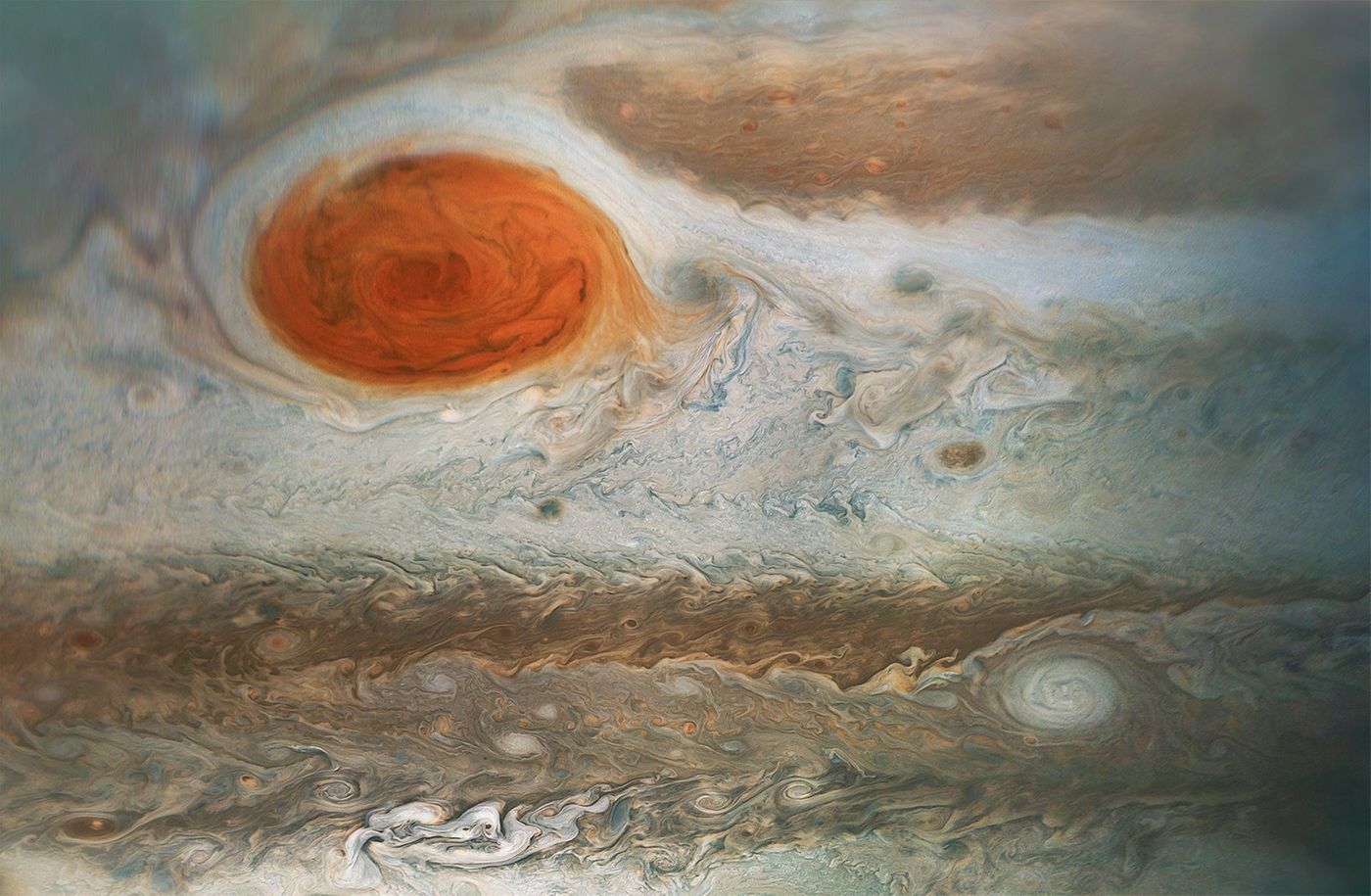Researchers Reveal Changes in Jupiter's Spot
There's a massive storm on Jupiter called the Great Red Spot. It swirls in the planet's Southern Hemisphere, spinning counterclockwise at speeds that are estimated to range from 430 to 680 kilometers per hour (270 to 425 miles per hour) at their fastest. The storm has been under observation for decades, but there is still a lot we don't know about it, like when or how it first started. Researchers also don't know why it's red. Now, scientists think the size and shape of it is changing; a new study reported in Geophysical Research Letters has suggested that it's becoming taller.
“In the Voyager era, you could fit about three Earth across the Great Red Spot, but it’s been steadily shrinking and is now just bigger than the Earth,” said study co-author Amy Simon, a planetary scientist at NASA Goddard.
Simon also said that "photochemical products like smog” could be part of the reason why the storm appears to be red. It might get its hue from chemicals in the cloud tops of the storms, or sunlight could be interacting with chemicals in the upper atmosphere, simply giving the storm the illusory appearance of being red, while it just has a 'sunburn' on top.
In 2019, scientists began to examine images of the Great Red Spot (GRS) obtained from the Hubble Space Telescope more closely because the storm seemed to be changing. Material appeared to be flaking off the main oval of the storm.
The analysis by Simon and colleagues indicated that the wind speeds outermost ring of the storm had accelerated by about eight percent, while the center winds moved much slower. These changes in wind had occured in 2016 and 2017, earlier than the 'flaking' events.
“When we first looked at the GRS shrinking, we somewhat expected to see the winds increase, conserving angular momentum, like a figure skater pulling in her arms,” Simon said. “But that’s not what we measured. What we are seeing now is that both stretching and spinning faster happen, though we can’t yet say how continuous either trend is, or if this is part of the GRS eventually disappearing.”
The researchers noted that it took years to make these observations, and they stresed that these are not big changes in the GRS. The investigators don't know what may be causing them.
Sources: The Planetary Society, Geophysical Research Letters









